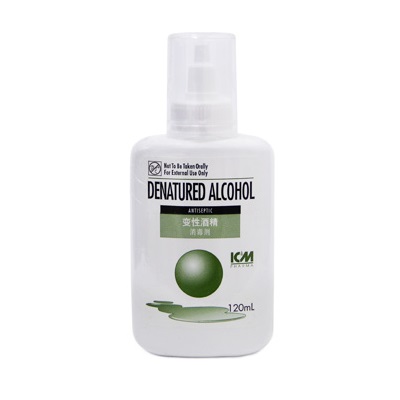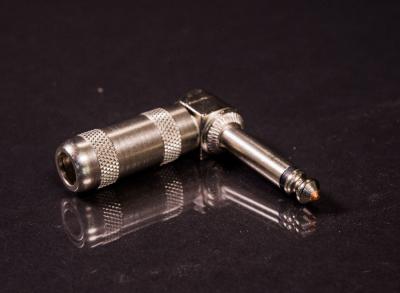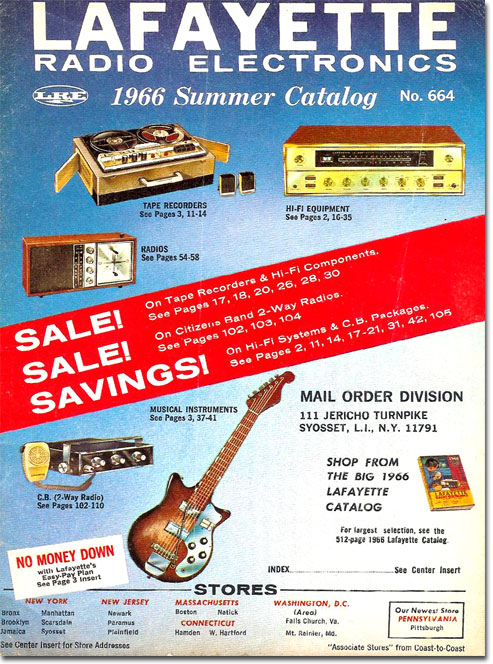Page 1 of 2
Multi-contact Jacks
Posted: 2 Sep 2018 5:49 pm
by Len Amaral
Stewart McDonald introduced these new multi-contact jacks. Seems like a nice design.
Thoughts?


Posted: 2 Sep 2018 6:53 pm
by Larry Dering
Looks sturdy. Wonder who and where it's manufactured? Hopefully Switchcraft.
Posted: 2 Sep 2018 6:59 pm
by Bill Burch
I can imagine double the insertion and extraction force. Need well-made plugs and a sturdy mounting plate.
Bill
Posted: 2 Sep 2018 7:07 pm
by Jack Hanson
Seems somewhat akin to creating a solution for a problem that does not exist.
Posted: 3 Sep 2018 5:11 am
by Scott Duckworth
Manufacturer is "Pure Tone Technologies". They also have mono and stereo, and gold plated.
https://puretonetechnologies.com/
Posted: 3 Sep 2018 5:50 am
by Lee Baucum
"100% greater surface area at all contact points creates a more stable connection; as a result, high and low frequencies are greatly improved creating a much more balanced sound while eliminating frequency spikes. No more noise crackle caused by pressure grounds!"
Posted: 3 Sep 2018 7:34 am
by Godfrey Arthur
Here's Puretone's signal chart.



Yeah make sure the jack panel can handle the pressure and your plug should be sturdy enough to not come apart for the connect/disconnect.
Check for room in the replacement area.
Posted: 3 Sep 2018 8:47 am
by Ian Rae
Jack Hanson wrote:Seems somewhat akin to creating a solution for a problem that does not exist.
To me it seems that conventional jacks rely on sideways pressure to make contact whereas with these the force is balanced. They won't necessarily need twice the effort to get in and out - that depends on the springiness of the contacts, which can now be less. Feels like a solution, or at least a bit of extra elegance.
Posted: 3 Sep 2018 8:48 am
by Ian Rae
[annoying double post]
Posted: 3 Sep 2018 9:01 am
by Jack Stoner
I can see better mechanical connection, if that is needed.
But I can't see any better frequency response. Sort of like the $150 AC power cord that claims better audio or the $150 boutique audio guitar cables.
Posted: 4 Sep 2018 3:26 pm
by Len Amaral
I ordered a few of these multi contact jacks. For 5 bucks it's a easy upgrade.
Posted: 4 Sep 2018 7:18 pm
by Steven Paris
So you double the contact area on the tip but not on the sleeve?? What the H**** does that get you?
Posted: 4 Sep 2018 7:22 pm
by Jim Cohen
Godfrey Arthur wrote:Here's Puretone's signal chart.

I don't have any experience with frequency curves like this per se but I've studied a lotta graphs in my career and these two don't look to be appreciably different to my eye. I could be wrong, but am I?
Posted: 5 Sep 2018 12:52 am
by Godfrey Arthur
Jim Cohen wrote:Godfrey Arthur wrote:Here's Puretone's signal chart.

I don't have any experience with frequency curves like this per se but I've studied a lotta graphs in my career and these two don't look to be appreciably different to my eye. I could be wrong, but am I?
Actually there is much to consider (if these charts are accurate). The low end for one is more prevalent and there are less peaks and dips in the upper frequencies with more high end.
Acid test would be to try them out for oneself. Under amplification is where pieces like this make their impressions opening up ( or not ) more flexibility in the response of the instrument being amplified.
The price for these jacks is not exorbitant. I replaced some jacks on some of my offshore guitars that are in my studio with Switchcrafts and there was a noticeable difference. A jack looks to be the weak link in the chain. Had I known about these Puretones, I would've given them a try over the offshore jacks I replaced. By
offshore, it is meant to imply a
cost conscious approach (more often than not metric not standard) not to mean that anything better is not capable from offshore companies. Just for now, things made for penny pinchers are the FIFO of supply and demand at this point. And the fact that metric jacks need metric plugs while American guitars and amps are (at least they used to be) standard 1/4" devices, is something to consider.
We're talking about contact sports here and making good physical contact for jack and plug is crucial, I would think.
That said, what are the barrel dimensions of the Puretone jacks?
I could not find on Puretone's site where the jacks are actually made. But they'll make anything overseas built to your specs. They have the equipment and the people to do it.
So you double the contact area on the tip but not on the sleeve??
Good point Steve. However the
ground contact is the one tang and the whole barrel of the jack surrounding the sleeve so if the jack's tolerances match the plug you use (which is why I stress that a plug and a jack are not uniform in their construct from company to company or standard/metric, hence Switchraft plug to Switchcraft jack for example) then the sleeve should be making good contact. At least in concept the Puretone jack has added surface area for the
tip which would then give the sleeve something to work with.
After this, the best connection is to solder your cable to the instrument and then to the amplifier, however impractical for portability's sake.
But having a small plastic squirt bottle of denatured alcohol with a clean rag to wipe off the gunk on the plugs and a 9mm gun barrel brush (plastic) to clean out jacks is a good thing talking 1/4" phone plugs and jacks we find on most guitars and amps.




Posted: 5 Sep 2018 3:45 am
by Ian Rae
Jim Cohen wrote:I've studied a lotta graphs in my career and these two don't look to be appreciably different to my eye.
The vertical scale is tough to estimate, but some of the differences may be >6dB and therefore audible.
Posted: 5 Sep 2018 5:27 am
by Dave Mudgett
So you double the contact area on the tip but not on the sleeve??
Looking at the 2nd photo, it does appear that both tip and sleeve have double connectors. In the 1st photo, I assume the 2nd connector is hidden by the plug.
If the build quality is good, I think it's a good idea and agree with what Godfrey stated. This doesn't look to me anything like some of the ridiculously over-hyped and over-priced audiophile (or, IMO, even guitar) cables I've seen. $4.20 for a good mono jack is not excessive, IMO. If they made a barrel jack (used by G&L and others), I'd definitely try them. I hate the standard barrel jacks. I know of no good way to repair them if they start having issues, and I've never had one that didn't eventually crap out.
Jacks are probably my most common hardware point-of-failure on a guitar. A lot of newer jacks are, IMO, not good, and they cost almost as much as these.
As far as jacks making a difference - I can often hear the difference after cleaning older jacks - I generally use very fine (1000+ grit) sandpaper and then flush with DeOxit. It's subtle, but oxidation can have an effect. I do have a stash of old Switchcraft jacks that I've accumulated over the years. But I'll probably try a few of these when I have a guitar that needs a new jack. Len, let us know what you think.
On the graphs -
1. They don't state the dimensions. I assume they're standard frequency response magnitude (dB) vs. frequency (Hz), but it doesn't state that.
2. Many electrical engineers (I spent a good many years as one) live and die by tailoring dB vs. frequency graphs to their advantage. I agree with Godfrey that if the graph ordinate is dB, that is around 6dB in the low end, and I think 6dB in this situation is significant. I expect a bass player with a pristine signal path would notice this right away. The thing I'm not clear on is dB relative to what - I assume it's just some arbitrary thing, as I cannot imagine that the signal chain they use actually attenuates the signal over 40 dB. Here's the blurb that goes with that chart:
Graph 1 shows the unaltered direct dry signal with a standard Switchcraft jack. In Graph 2, the only difference to the signal path is the replacement Pure Tone jack. Signal path is as follows:
1981 Gibson Les Paul standard with a low output Motorcity pickup> Evidence Audio low capacitance Forte cable > Little Labs DI > Neotek Series II console (flat EQ & no processing). Recorded using ProTools.
Posted: 5 Sep 2018 5:48 am
by Len Amaral
Another thought, i am going to change the jack in my speaker cab to the multi-contact jack.
I remember a fellow player saying he changed his 1/4 inch speaker jacks in his PA speakers tp Speakon jacks and it made a difference. We'll see.....
Posted: 5 Sep 2018 6:19 am
by Jerry Overstreet
Thanks for the heads-up on these Len. Sure seems like a good idea to me.
I'll be checking them out for my future projects.
Posted: 5 Sep 2018 6:37 pm
by Donny Hinson
How do we know that the "improved" response isn't due to something else, besides improved contact? I'm thinking that the stray capacitance or inductance may be playing a part in the "smoothing" effect due to both the increased area and the proximity of the conductors.
Also, I'd like to see the same graphs for soldered connections.
Posted: 6 Sep 2018 6:26 am
by Paul Pederson
A proper test would be a frequency sweep from a tone generator through the jack to a frequency analyzer.
There are WAY too many variables in that signal chain to consider this chart as a good comparison tool, especially since it was likely a screen shot of a spectrum chart in a DAW.
If the source is someone plucking a string or chord on a guitar, there's no way possible to ensure exactly the same signal was used. It would have to be recorded and played back through the signal chain for an exact comparison.
That all said, I can see the argument for more reliability with more holding force by doubling up the tangs--but that's about it.
Posted: 6 Sep 2018 7:43 am
by Jack Stoner
I agree with what Donny Paul have stated.
A precise controlled test. We don't know what they did to get the response chart they show.
Posted: 6 Sep 2018 8:02 am
by Godfrey Arthur
Paul Pederson wrote:
That all said, I can see the argument for more reliability with more holding force by doubling up the tangs--but that's about it.
There should be something said about the metallurgy composition of the jack to add to the conductivity of the signal besides the force.
I was prepping a B3 the other night for a concert tomorrow. The 6 pin Amphenol for the Leslie was not conducting fully and creating thunderstorms. This was a two Leslie setup. Using an older 60's Leslie brand 30 foot cable helped with the thunderstorms, but it wasn't till after I took apart the Amphenol which was on 30 foot of brand new Hammond-Suzuki cable (with the thunderstorms) that I noticed a sonic improvement. After custom crimping each of the pins within each of the 6 jacks and then adding solder to the left over space of each female end, making the connection tighter at the Leslie amp, the sound of the one Leslie got louder and with more frequency response even over the older Leslie cable, to where both Leslies in tandem sounded more in sync with each other sonically.
My point is that the Hammond Suzuki brand cable purchased a few years ago sounded better than the older Leslie brand cable. Hence cable metallurgy together with a strong contact force makes for better frequency response. Reason battery cables are bolted to the battery. Those electrons like a tight fit.
I surmise that the metal tangs on anyone jack adds or takes away some frequencies depending on the metal composition.
G&H plugs are well made but feature a copper center on the tip for conductivity purposes.

Eric Johnson is said to like the "bigfoot" G&H plugs as he feels the larger mass of the plug gets him a better response out his rig.

If for anything than a tighter fit, a jack that holds the plugs in place are a plus.
Best we can do here is try the Puretones out and see what we all think about them.
Posted: 6 Sep 2018 9:32 am
by Michael Maddex
I think that Jack hit the proverbial nail on the head:
Jack Stoner wrote:I can see better mechanical connection, if that is needed.
But I can't see any better frequency response. Sort of like the $150 AC power cord that claims better audio or the $150 boutique audio guitar cables.
Jack, I think that you, and a maybe a couple of others here, are old enough to remember
Allied Radio and
Lafayette Electronics. I believe that one of them had a similar jack back in the day. I don´t recall any Advertising Hype, though, just the old-fashion ´Good´, ´Better´, ´Best´ style of rating.
Exactly my Two Cents Worth. YMMV.

Posted: 6 Sep 2018 10:10 am
by Godfrey Arthur
Michael Maddex wrote: Allied Radio and Lafayette Electronics. I believe that one of them had a similar jack back in the day. I don´t recall any Advertising Hype, though, just the old-fashion ´Good´, ´Better´, ´Best´ style of rating.
I ordered from those catalogs all the time, Shure mics, Atlas stands, JBL speakers. It was the place to go for those kinds of things.
Advertising back then was simple, almost cartoonish by today's standards but got the job done in plain English.


Posted: 6 Sep 2018 11:06 am
by Jack Stoner
I've bought a lot of stuff from both of those companies.
I'm a Ham Radio op and (former) amp tech.
Also bought a lot of stuff from Heathkit, including a guitar amp kit.
















